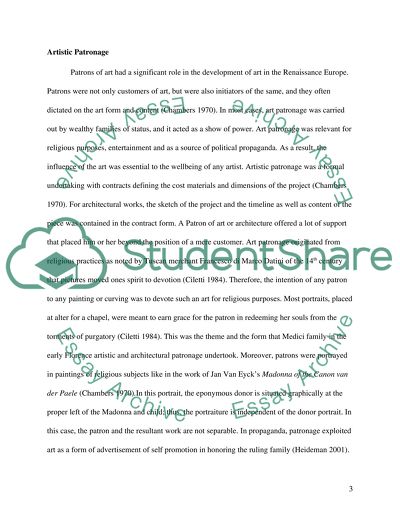Cite this document
(“The Role of Women as Patrons during the Renaissance Essay”, n.d.)
Retrieved from https://studentshare.org/visual-arts-film-studies/1397964-6-discuss-the-role-of-women-as-patrons-of-art-and-or-architecture-during-the-renaissance
Retrieved from https://studentshare.org/visual-arts-film-studies/1397964-6-discuss-the-role-of-women-as-patrons-of-art-and-or-architecture-during-the-renaissance
(The Role of Women As Patrons During the Renaissance Essay)
https://studentshare.org/visual-arts-film-studies/1397964-6-discuss-the-role-of-women-as-patrons-of-art-and-or-architecture-during-the-renaissance.
https://studentshare.org/visual-arts-film-studies/1397964-6-discuss-the-role-of-women-as-patrons-of-art-and-or-architecture-during-the-renaissance.
“The Role of Women As Patrons During the Renaissance Essay”, n.d. https://studentshare.org/visual-arts-film-studies/1397964-6-discuss-the-role-of-women-as-patrons-of-art-and-or-architecture-during-the-renaissance.


